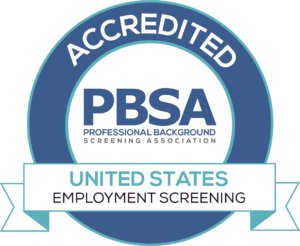According to a report by the U.S Bureau of Labor Statistics, turnover is continuing to reach new heights as we move further into 2022. While departures increased the most in lower-wage industries including food service, transportation, and warehousing, the overall number of quits across the board has risen— and this trend is likely to continue.
Of course, turnover is one of the great plagues for employers— one that has no absolutely proven vaccine. While raising wages and providing accommodations seem to be powerful remedies to the ills of high turnover, there are other things every employer can do to improve their hiring processes, and in turn, find good workers who will stick around.
Establishing a Sound Hiring Criteria
The story of your desired workforce begins with the hiring manager. Whether this be in the form of a company executive, department head, HR specialist, or any other staff member, they will need to be very intentional about each hire. The following tips will greatly help in this effort.
1. Know Your Company Culture
While some organizations may pay little mind to their internal culture, it matters quite a bit to the average employee. At the very least, people will likely seek work environments that are healthy, friendly, and have clear goals.
Knowing your company culture before making hires will make interviews with prospective employees more authentic and productive, allowing them, and you, to better determine if there’s a fit.
2. Understand Your Company Needs
When it comes to hiring, the needs of a company aren’t always as straightforward as they may seem. If you are managing a short-staffed warehouse, you may think you need physical strength when you really need a likable personality to help boost morale on the floor. If you are hiring for a sales position, you may think you need experience when what you really need is a willingness to learn.
Each company as well as each position within it is unique, requiring more than a surface-level understanding of needs. When you approach a new hiring opportunity, make sure the position, as well as the context around it, are thoroughly assessed.
3. Have Roles Clearly Defined
One of the major pain points for employees is taking on obligations outside of what they believe to be their sphere of responsibility.
While small and mid-sized companies often require flexibility from their staff, it is important for employers to have an idea of how a certain position could evolve over time. Moreover, all current responsibilities and duties relating to the position at the time of hire should be clearly outlined and communicated.
4. Determine Your Expectations
As an organization, you have the right to hold your staff to a reasonable standard. However, it is not fair to expect something from your employees when it has not been clearly communicated to them.
If punctuality is of the utmost importance to you and your organization, communicate it to potential hires. If not meeting quotas comes with a consequence, communicate it to your potential hires. If you expect a certain level of sociality and friendliness in the workplace, communicate it to your potential hires.
The bottom line here is that each employer needs to identify their expectations and communicate them clearly to potential hires before they join the force. This will allow both parties to make the appropriate determinations regarding the position before official decisions are made.
5. Familiarize Yourself With State and Federal Hiring Laws
Employees have rights. The specifics surrounding these rights vary a great deal from state to state and need to be well-understood by employers. Failure to comply with such laws can lead to legal battles and closed doors.
You can find a shortlist of general hiring laws here.
6. Consider Implementing a Background Screening Process
A pre-employment background check can include anything from criminal background searches and drug tests to credential and employment verifications, and more. Proper screening through a trusted provider can go a long way in securing your hiring processes and allowing you to build your ideal workforce.
7. Think Long-Term
Is your organization looking to scale? Could the role you are currently hiring for look different in the near future? Are there any particular skills you will be in great need of down the road? These things should greatly influence the people you hire.
Some of the most successful enterprises promote almost exclusively from within and are able to do so because of their forward-thinking when it comes to hiring.
8. Keep It Consistent
This is perhaps the most simple yet important step. When you develop a hiring process that works for your organization, maintain the same general infrastructure for all new hires. Don’t run a background check on some candidates and not others. Don’t communicate key values and expectations with just a portion of your new staff. Keep the process as consistent as you can. The consistency of effective practices is what largely defines a successful operation.
Conclusion
While unicorn employees will occasionally walk themselves into your door and find themselves in a position at your company, it’s not commonplace. Good hires are often made, not found. The making of a good hire begins during the hiring process. For this reason, investing in that process is imperative to building the workforce you desire. If you have any questions about how you can potentially improve your hiring process through the implementation of proper screening protocols, reach out to us. We are always happy to help.








